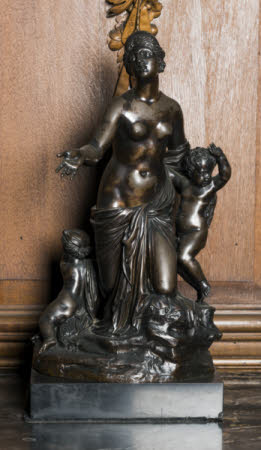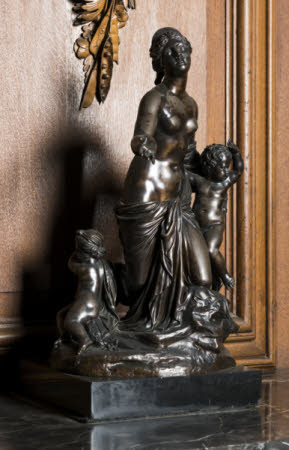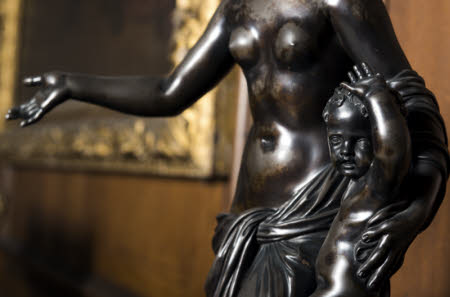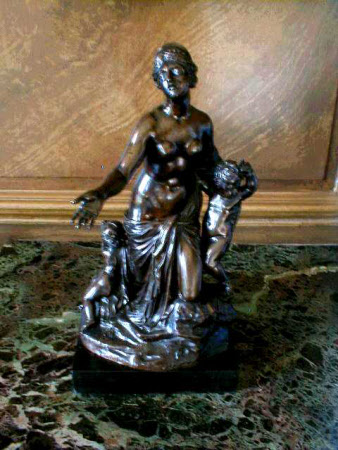Latona with her Children
after Gaspard Marsy (1624-1681) and Balthazar Marsy (1628-1674)
Category
Art / Sculpture
Date
circa 1701 - circa 1799
Materials
Bronze
Measurements
630 mm high
Place of origin
France
Order this imageCollection
Belton House, Lincolnshire
NT 435367
Summary
Bronze on black marble base, Latona with her children, after Gaspard Marsy (1624-1681) and Balthazar Marsy (1628-1674), French, probably 18th century. A bronze figural group of Latona kneeling on a rocky outcrop, in supplication to Zeus. Her right arm is outstretched, drapery falls from her waist. Her children Apollo and Diana are beside her. Mounted on a square black marble base.
Full description
The story of Latona is told in the Roman poet Ovid's Metamorphoses (6:317-381). Having been expelled by Zeus’ jealous wife Hera, Latona gave birth to Zeus’ children Apollo and Diana on the island Delos. Wandering the earth with her infant children, she approached a pool in Lycia to quench her thirst but was driven away by peasants who stirred up mud from the bottom of the pool to prevent her from drinking. Enraged and humiliated, Latona implored Zeus to avenge them. She punished the Lycian peasants by turning them into frogs. The court sculptors Gaspard Marsy (1624/5-81) and his brother Balthasar (1628 -74) interpreted Latona’s story for a fountain at Versailles. Commissioned by Louis XIV, the Sun King, the fountain narrates the childhood story of Apollo, the sun god that Louis had chosen as a personal emblem. The sculpture, finished in 1670, stands in the Bassin de Latone, surrounded by gilt sculptures of the Lycian peasants metamorphosing into frogs. Bronze reductions of Latona and her children were known in the 18th century, often paired with figures of Flora or Andromeda. Alice Rylance-Watson October 2018
Provenance
Purchased with a grant from the National Heritage Memorial Fund (NHMF) from Edward John Peregrine Cust, 7th Baron Brownlow, C. St J. (b.1936) in 1984.
Credit line
Belton House, The Brownlow Collection (acquired with the help of the National Heritage Memorial Fund by the National Trust in 1984)
Makers and roles
after Gaspard Marsy (1624-1681) and Balthazar Marsy (1628-1674), sculptor




